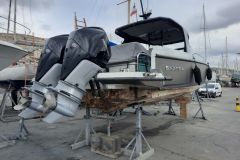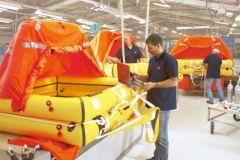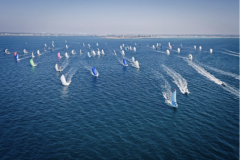Vessels with precarious stability
A boat's stability comes from its weight and shape. In the case of multihulls, without keel ballast, stability is primarily due to their width. This makes them very stable initially, but once a float is taken out for a catamaran or the central hull for a trimaran, the stability decreases drastically, along with the width in the water. The balance becomes precarious and it is the sailor's skill and concentration that keep the boat on the right track, watching the over-steering...
However, on long voyages, particularly in single-handed transatlantic races such as the Route du Rhum, the skipper's concentration cannot be permanent and rest becomes compulsory. That's why companies have developed safety systems that allow the sheets to be released in an emergency and the multihull to be levelled. We were able to see Ocean Data System setting up the UpSideUp system installed for Roland Jourdain on his catamaran WeExplore.
Release of the sheets with compressed air
The release system is made from a simple cleat. A metal actuator, activated by a compressed air circuit, expels the sheet from the cleat. The sail is thus relieved of its power, and the boat's list is reduced. Compressed air pressure is provided by hand pumping on Roland Jourdain's catamaran for simplicity and economy, but is usually maintained by a small electric compressor.
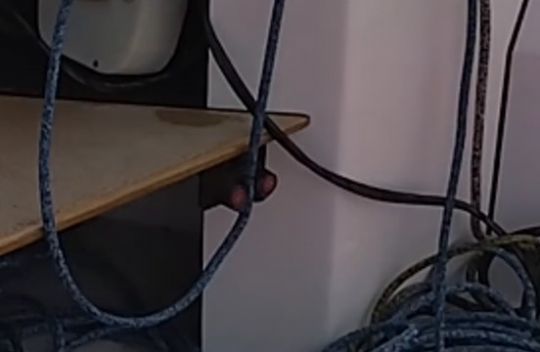
When sailing, the sailor passes the sheet through the cleat at the winch exit, then leaves some slack between the cleat and the winch, on which he passes the sheet back to the self-tailing. When the system developed by Ocean Data System releases the sheet, it only releases the right length to make the boat flatter, without the sailor having to re-board everything to get the boat moving again.
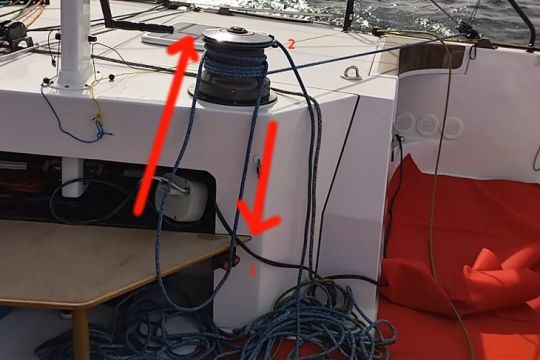
During our sailing with Roland Jourdain, different tests were conducted to find the right length and the right way for the slack of the sheet, spinnaker, mainsail or genoa.
When to shock the listener?
Once the release mode is defined, it is still necessary to decide when to release To do this, the Ocean Data System uses different sensors. The heel angle is the main parameter. Beyond a certain angle, an audible alarm is emitted, then at the next threshold, the sheet is released. The system collects the wind strength and direction, to adapt the choices to upwind or downwind points of sail, for which the tolerances are different.
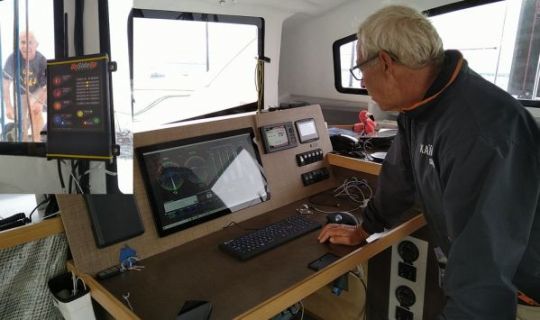
Ocean Data System also controls the boat's trim, to release in case the boat sinks.
During the test, a load sensor on the mainsheet was also used to estimate the rig load.
Then, according to the architects' calculations and their apprehension of the risk, each sailor manages his parameters.






